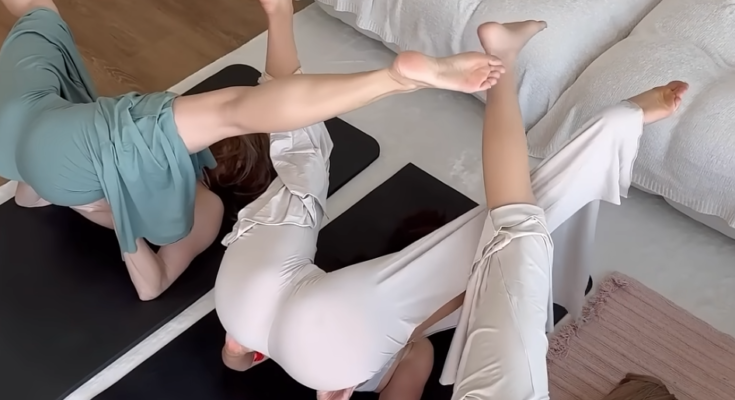Yoga is a beautiful and transformative practice that helps strengthen the body, enhance flexibility, and cultivate mindfulness. One of the most visually striking and physically beneficial poses in yoga is the Elbowstand Leg Stretch, a pose that combines balance, strength, and flexibility. In this article, we will explore this powerful pose with guidance from the talented yoga instructor, @LilliesYoga.
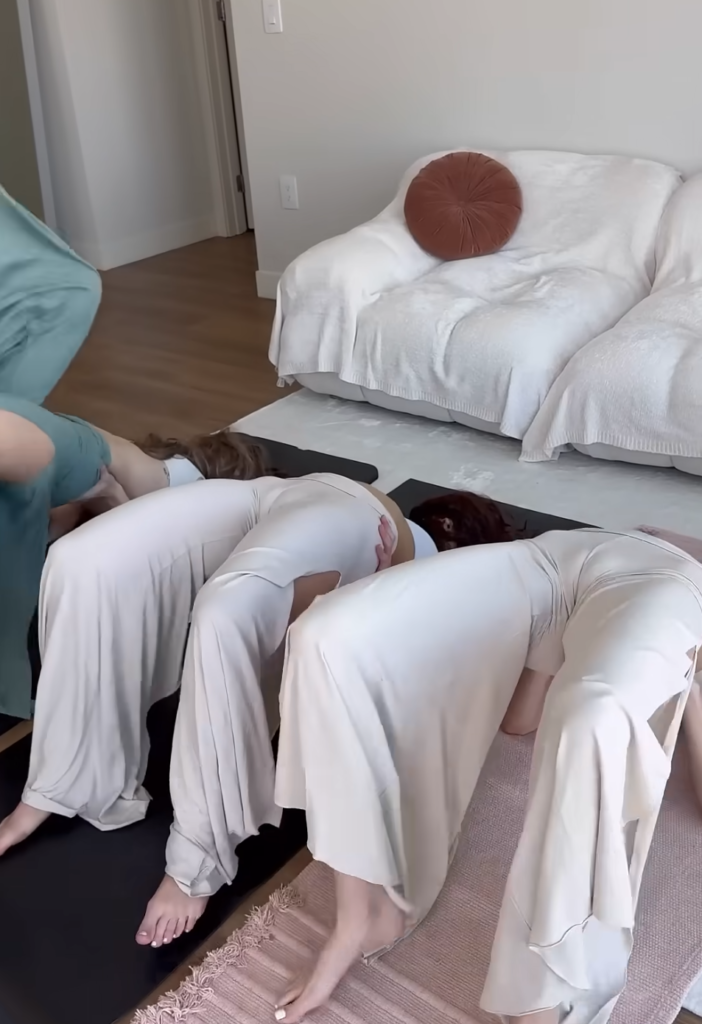
Understanding the Elbowstand Leg Stretch
The Elbowstand Leg Stretch, also known as Pincha Mayurasana (Forearm Stand) with Leg Variations, is an advanced inversion that challenges both the upper body and core strength. Unlike a traditional headstand, which relies on the head for support, this pose keeps the weight on the forearms, reducing strain on the neck while increasing shoulder stability. Adding a leg stretch enhances the benefits, working on hamstring flexibility and spinal elongation.

Benefits of the Elbowstand Leg Stretch
Practicing the Elbowstand Leg Stretch provides numerous physical and mental benefits, including:
- Strengthens the shoulders, arms, and core: Holding the body upside down requires significant upper body engagement.
- Enhances flexibility: The leg stretch aspect works on the hamstrings and hips.
- Improves balance and coordination: Inversions challenge proprioception and stability.
- Boosts blood circulation: This pose encourages blood flow to the brain, improving mental clarity and focus.
- Increases confidence and courage: Overcoming the fear of inverting builds resilience and self-trust.

Preparation: Warm-Up and Foundational Poses
Before attempting the Elbowstand Leg Stretch, it’s crucial to warm up the body and prepare for inversion. Below are some foundational poses that help with flexibility and strength:
1. Downward Facing Dog (Adho Mukha Svanasana)
- Stretches the hamstrings, calves, and shoulders.
- Prepares the body for weight-bearing on the arms.
2. Dolphin Pose (Ardha Pincha Mayurasana)
- Strengthens the shoulders and mimics the foundation of the forearm stand.
- Helps build endurance in the upper body.
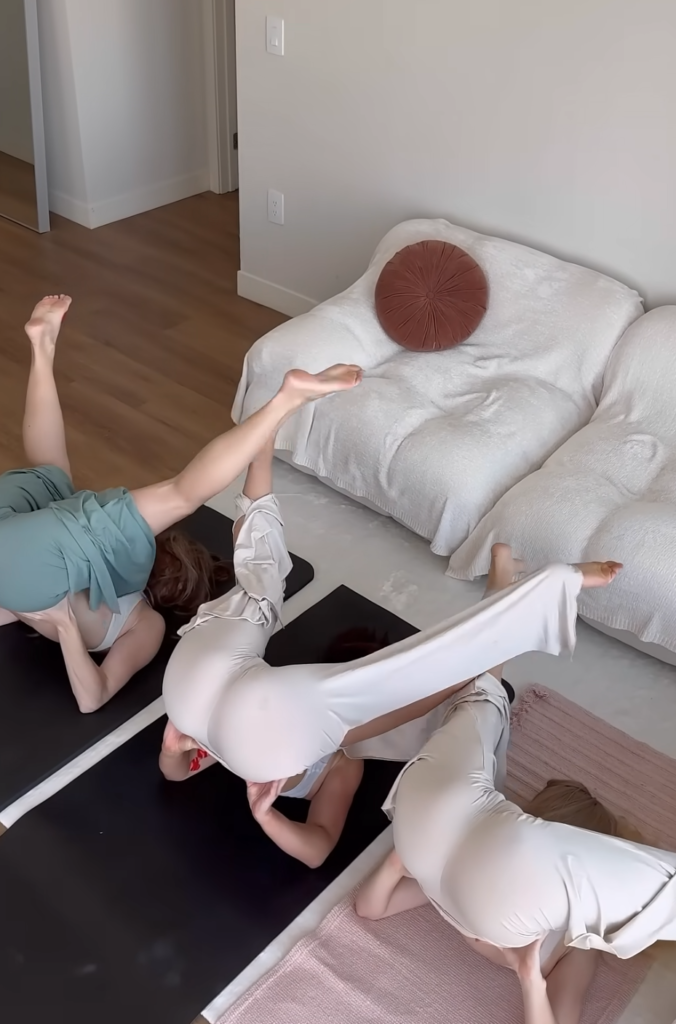
2. Dolphin Pose (Ardha Pincha Mayurasana)
- Strengthens the shoulders and mimics the foundation of the forearm stand.
- Helps build endurance in the upper body.
3. Low Lunge (Anjaneyasana)
- Opens the hips and quadriceps.
- Prepares the body for leg flexibility.
4. Standing Forward Fold (Uttanasana)
- Lengthens the hamstrings.
- Encourages flexibility in the lower body.
5. Core Activation (Plank and Boat Pose)
- Engaging the core is essential for stability in inversions.
- Strengthening the abdominal muscles prevents excessive back arching.
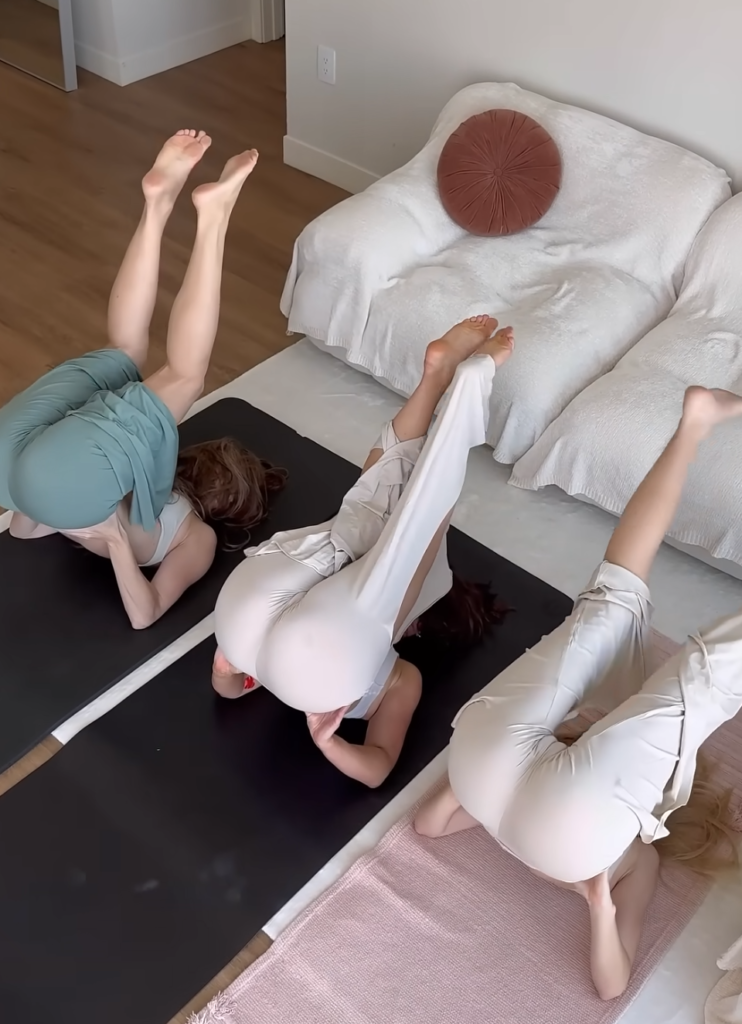
Step-by-Step Guide to the Elbowstand Leg Stretch
Now that your body is warmed up, follow these steps to safely enter and hold the Elbowstand Leg Stretch:
Step 1: Setting Up the Foundation
- Begin in a Dolphin Pose, ensuring that your forearms are firmly pressed into the mat.
- Keep your elbows shoulder-width apart and your fingers spread wide for a solid base.
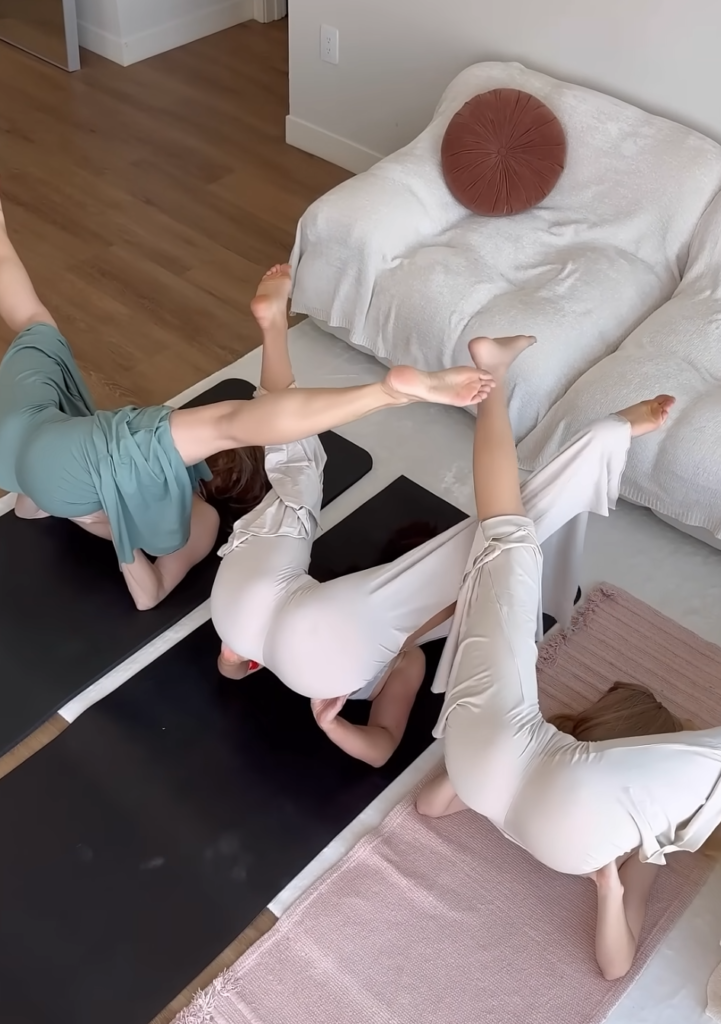
Step 2: Entering Forearm Stand
- Walk your feet closer to your arms to stack your hips over your shoulders.
- Engage your core and lift one leg up toward the sky.
- Use momentum to gently kick up into Pincha Mayurasana (forearm stand), keeping both legs together.
Step 3: Finding Stability in the Pose
- Once balanced, engage your core and press actively through your shoulders.
- Keep your gaze slightly forward rather than looking straight down.
- Maintain a steady breath to help with focus and relaxation.
Step 4: Adding the Leg Stretch
- Once stable, slowly extend one leg outward, pointing the toes toward the ceiling.
- Hold for a few breaths, then switch legs to stretch both sides evenly.
- If possible, try different variations, such as a split position or a bent-knee stretch.
Step 5: Coming Out of the Pose Safely
- Slowly lower one leg down at a time.
- Return to Dolphin Pose and then into Child’s Pose (Balasana) to release tension in the shoulders and back.
- Take deep breaths to relax the nervous system after the inversion.
Common Mistakes and How to Fix Them
Many yogis struggle with inversions, especially in the beginning. Here are some common mistakes and how to correct them:
- Arching the back too much → Engage the core and tuck the ribs in.
- Collapsing in the shoulders → Actively press into the forearms and lift away from the floor.
- Kicking up too forcefully → Use controlled movement rather than relying on momentum.
- Holding the breath → Maintain steady inhales and exhales to stay focused.
Tips for Success from @LilliesYoga
LilliesYoga is known for her graceful and strong inversions. Here are some of her expert tips:
- Build strength gradually: Practice Dolphin Pose and Plank daily to increase upper body endurance.
- Use a wall for support: If you’re new to elbowstands, practice near a wall to build confidence.
- Engage the entire body: From the fingertips to the toes, keep every part of the body active.
- Stay patient and consistent: Mastering inversions takes time, so keep practicing with dedication.
Modifications and Variations
If you’re not yet comfortable with the full pose, try these variations:
- Wall-Assisted Elbowstand: Practice with your feet against a wall for support.
- Bent Knee Variation: Instead of straight legs, keep the knees bent to work on balance.
- Elbowstand to Scorpion Pose: Advanced practitioners can transition into a backbend variation for deeper spinal flexibility.
Cool Down and Recovery
After practicing the Elbowstand Leg Stretch, it’s important to cool down with gentle stretches:
- Child’s Pose (Balasana): Releases tension in the shoulders and back.
- Seated Forward Fold (Paschimottanasana): Stretches the hamstrings and calms the nervous system.
- Reclining Twist (Supta Matsyendrasana): Helps release tension in the spine.
- Savasana (Corpse Pose): Allows the body to fully relax and integrate the benefits of the practice.
Final Thoughts
The Elbowstand Leg Stretch is an incredible yoga pose that builds strength, flexibility, and balance. With consistent practice and guidance from experienced yogis like @LilliesYoga, you can achieve this challenging yet rewarding inversion. Remember to listen to your body, progress at your own pace, and enjoy the journey of exploring new possibilities in your yoga practice.
Are you ready to take your yoga practice to new heights? Roll out your mat, start practicing, and let the magic of inversions unfold!
